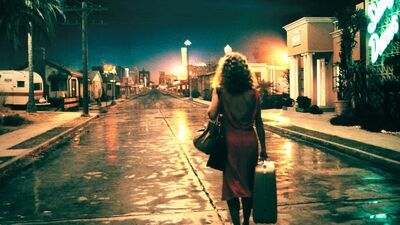And yet, as much as I love and admire so many of the films that he has made over the years, from those aforementioned stone-cold classics to such equally impressive accomplishments as “Rumble Fish,” “The Cotton Club” and “Bram Stoker’s Dracula,” it is this one that stirs and dazzles me the most and reminds me of why I fell in love with the movies in the first place. Now, more than 40 years since its disastrous original release and over 20 since the first time that Coppola, as he has tended to do with his work throughout his career, has reworked and reissued it, he has done it again with “One from the Heart: Reprise,” a 4K digital restoration of the film that sees him further refining the material into a version roughly 14 minutes shorter than its original release. This new edition is now being released in theaters in advance of its eventual appearance as a 4K UHD and, speaking as an unabashed fan of the film, the chance to once again see it on the big screen in all its glory and, hopefully, expose a new audience to its wonders without any of the background Sturm und Drang that accompanied its original release, will hopefully go down as one of the key cinematic events of the still-young year.

The story of what happened has been chronicled in many places—most recently in Sam Wasson’s The Path to Paradise: A Francis Ford Coppola Story—so I will be brief in recapping it here. Having survived the major artistic gamble of “Apocalypse Now,” Coppola decided to double down by purchasing his own Hollywood studio, dubbed Zoetrope Studios, to serve as an artistic laboratory where a wide array of talents, both legendary and emerging, could work with the latest advances in filmmaking technology. One of the keys to this would be the use of what he dubbed “electronic cinema”—a process involving the use of computerized “pre-visualizations” to plan how scenes would look in advance, video cameras on the set that would allow filmmakers to immediately see how things looked and editing by computer that would allow for greater freedom in terms of putting the elements together. These notions would eventually become industry standards but Coppola was the first to employ them on such a grand scale and the start-up costs proved to be high and would soon spiral out of control.

Instead of doing the film as the straightforward Chicago-set romantic drama indicated in the original script by Armyan Bernstein, Coppola rewrote it and set it in that most dreamlike of American cities, Las Vegas. However, befitting a story that he was now seeing as a tale of dreamers contemplating taking a chance on a destiny that could prove to be as illusory as “spit on a griddle,” as one character succinctly puts it, he decided that instead of shooting in the actual Vegas, he and production designer Dean Tavoularis would recreate it on the Zoetrope stages in order to help achieve the ultra-flashy look that he was hoping to achieve. By this time, he had also decided to make the film as a musical and while he would go as far as to hire the legendary Gene Kelly to serve as a consultant for the film’s major dance scene, Coppola’s approach was far removed from the norm—instead of the actors belting out the tunes, Tom Waits (who had been hired to compose the songs) and Crystal Gayle would sing in the background as a way of commenting on the action in a conceit closer to MTV than MGM. To accomplish all of this required lots of money and, as was the case of his previous project, Coppola essentially gambled his new studio and his financial stability on the idea that viewers would spark to what he had in store for them.

